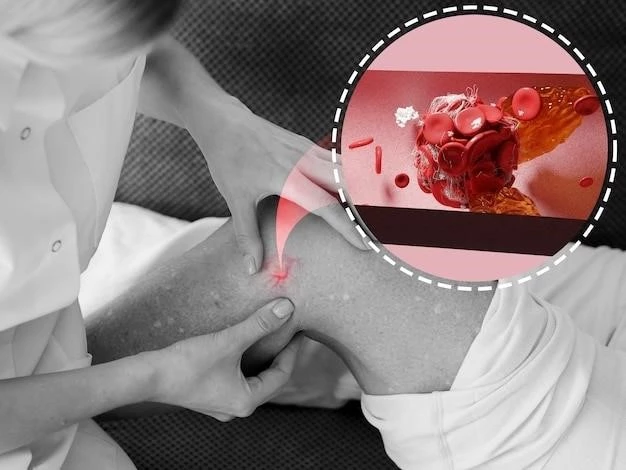Overview of Steatocystoma Multiplex
Overview of Steatocystoma Multiplex
Steatocystoma Multiplex is a rare genetic condition characterized by multiple benign cysts in the skin’s sebaceous glands․ These cysts usually appear during adolescence and can be scattered on the body․
Definition and Characteristics of Steatocystoma Multiplex
Steatocystoma Multiplex is a rare genetic disorder characterized by the presence of multiple benign cysts in the skin’s sebaceous glands․ These cysts are filled with sebum and typically manifest during adolescence on areas such as the torso‚ neck‚ upper arms‚ and upper legs․ While usually benign‚ the condition can be disfiguring and may lead to psychologic distress due to undesirable skin lesions․ Steatocystoma Multiplex can be inherited in an autosomal dominant manner‚ with a tendency to develop cysts passed down from one parent to their offspring․
Definition and Characteristics
Definition and Characteristics of Steatocystoma Multiplex
Steatocystoma Multiplex is a rare genetic condition characterized by multiple benign cysts in the skin’s sebaceous glands․ These cysts typically appear during adolescence and can be dispersed across the body‚ causing potential distress due to skin lesion visibility․
Autosomal Dominant Inheritance of Steatocystoma Multiplex
Steatocystoma Multiplex is an autosomal dominant genetic disorder‚ meaning that the tendency to develop multiple cysts in the skin’s sebaceous glands is inherited from one affected parent․ With this inheritance pattern‚ there is a 50% chance that the offspring of an affected individual will also develop steatocystoma multiplex․
Clinical Presentation
Clinical Presentation of Steatocystoma Multiplex
Steatocystoma Multiplex presents as multiple benign cysts on the skin‚ often appearing on the trunk‚ arms‚ face‚ thighs‚ and other body parts․ While usually asymptomatic‚ the condition can be visually distressing․ Seek professional advice for diagnosis and management․
Autosomal Dominant Inheritance
Autosomal Dominant Inheritance of Steatocystoma Multiplex
Steatocystoma Multiplex is inherited in an autosomal dominant manner‚ indicating that the propensity to develop skin cysts is passed down from one affected parent․ This mode of inheritance increases the likelihood of offspring also having the condition․ Understanding this inheritance pattern can be crucial in assessing familial risks and seeking appropriate medical advice․

Diagnosis and Differential Diagnoses
Diagnosis of Steatocystoma Multiplex
Diagnosing steatocystoma multiplex involves identifying multiple benign cysts in the skin’s sebaceous glands․ Differential diagnoses may include lipoma‚ fat necrosis‚ epidermal cyst‚ among others․ Consult a healthcare professional for proper evaluation and management․
Symptoms and Manifestations
Symptoms and Manifestations of Steatocystoma Multiplex
Steatocystoma multiplex typically presents as multiple small dermal cysts filled with sebum that can be scattered throughout the body‚ with common areas including the trunk‚ arms‚ face‚ thighs‚ and scalp․ While these cysts are usually asymptomatic‚ they can be visually distressing․ It is essential to consult a healthcare professional for accurate diagnosis and appropriate management․
Treatment Options
Treatment Options for Steatocystoma Multiplex
Management of steatocystoma multiplex may involve medical interventions for symptomatic relief or surgical procedures for cyst removal․ Consult with a dermatologist for personalized treatment recommendations based on the individual’s specific needs․
Medical and Surgical Interventions
Medical and Surgical Interventions for Steatocystoma Multiplex
Treatment options for steatocystoma multiplex may include medical interventions for symptomatic relief and surgical procedures for cyst removal․ Consultation with a dermatologist is recommended to evaluate the best course of action based on the individual’s specific condition and concerns․

Associated Syndromes
Associated Syndromes of Steatocystoma Multiplex
Steatocystoma multiplex can be associated with syndromes such as pachyonychia congenita and Alagille syndrome․ Genetic mutations in keratin 17 are thought to be linked to the development of steatocystoma multiplex․ Consult with a healthcare provider for proper evaluation and management․
Pachyonychia Congenita and Alagille Syndrome
Associated Syndromes⁚ Pachyonychia Congenita and Alagille Syndrome
Steatocystoma multiplex may be associated with syndromes such as Pachyonychia Congenita and Alagille Syndrome․ Mutations in the keratin 17 gene‚ known to contribute to the development of steatocystoma multiplex‚ can also be linked to these syndromes․ It is important to consult with a healthcare provider for proper diagnosis and management․
Histological Features
Understanding Steatocystoma Multiplex Histologically
Steatocystoma multiplex presents as numerous small‚ skin-colored or yellow cysts typically found on axillae‚ chest‚ face‚ thighs‚ and arms․ Histologically‚ these cysts are characterized by an epithelium-lined cystic wall associated with sebaceous lobules․ For accurate diagnosis and differentiation from similar conditions‚ a histological examination is often required․
Microscopic Examination Findings
Microscopic Examination Findings of Steatocystoma Multiplex
Microscopic examination of steatocystoma multiplex reveals numerous small‚ skin-colored or yellow cysts scattered on the body‚ with common sites including the trunk‚ arms‚ face‚ thighs‚ and scalp․ Histologically‚ these cysts present with an epithelium-lined cystic wall associated with sebaceous lobules․ Differentiating these features from other skin conditions is crucial for accurate diagnosis and appropriate management․
Prognosis and Management
Prognosis and Management of Steatocystoma Multiplex
Steatocystoma multiplex‚ a benign skin disorder‚ typically presents with multiple intradermal cysts․ Consider consulting a dermatologist for personalized management options based on the individual’s condition․
Outlook and Care Strategies
Outlook and Care Strategies for Steatocystoma Multiplex
While steatocystoma multiplex is generally benign‚ managing the multiple cysts and their impact on skin appearance can be challenging․ Consultation with a dermatologist for personalized care strategies is recommended to address the specific concerns associated with this condition․ Regular monitoring and tailored treatments can help individuals manage the skin lesions effectively․
